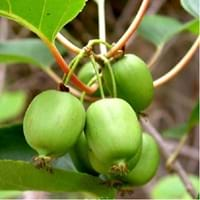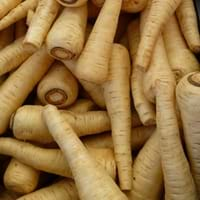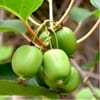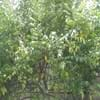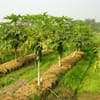Life Span
Perennial
Biennial and Perennial
Origin
Eastern Asia
Europe, Western Asia
Types
Actinidia arguta, Actinidia giraldii, Actinidia hypoleuca
Not Available
Number of Varieties
Not Available
Habitat
Dappled Shade, open Woodlands
waste ground, wastelands
USDA Hardiness Zone
3-8
4-9
Sunset Zone
1a, 1b, 2a, 2b, 3a, 3b, 4, 5, 6, 7, 8, 9, 14, 15, 16, 17, 18, 19, 20
A1, A2, A3, H1, H2, 1a, 1b, 2a, 2b, 3a, 3b, 4, 5, 6, 7, 8, 9, 10, 11, 12, 13, 14, 15, 16, 17, 18, 19, 20, 21, 22, 23, 24
Habit
Vining/Climbing
Rosette/Stemless
Flower Color
White, Ivory
Yellow
Flower Color Modifier
Bicolor
Bicolor
Fruit Color
Green, Yellow green
Brown, Black
Leaf Color in Spring
Green, Dark Green
Green
Leaf Color in Summer
Dark Green
Green
Leaf Color in Fall
Dark Green
Green
Leaf Color in Winter
Light Green
Not Available
Plant Season
Spring, Summer, Fall
Summer
Sunlight
Full Sun, Partial Sun
Full Sun
Growth Rate
Medium
Medium
The pH of Soil
Neutral
Neutral
Soil Drainage
Well drained
Well drained
Bloom Time
Spring, Late Spring, Early Summer
Summer
Tolerances
Shade areas
Drought
Where to Plant?
Ground, Pot
Ground, Pot
How to Plant?
Grafting, Stem Cutting
Seedlings
Plant Maintenance
Low
Medium
Watering Requirements
Average Water Needs, Requires regular watering
Average Water Needs, Do Not over Water, Keep the ground moist but not water-logged
In Summer
Regular watering required
Lots of watering
In Spring
Moderate
Moderate
In Winter
Average Water
Average Water
Soil Drainage Capacity
Well drained
Well drained
Sun Exposure
Full Sun, Partial Sun
Full Sun
Pruning
Remove damaged leaves, Remove dead branches, Remove dead leaves
Remove damaged leaves, Remove dead branches, Remove dead leaves
Fertilizers
Apply 10-10-10 amount, fertilize twice a year
All-Purpose Liquid Fertilizer
Pests and Diseases
Botrytis head rot, Japanese Beetles, Leaf Rollers, Nematodes, Phytophthora, Root rot, Sclerotinia blight, Spider mites, Thripes
Aphids, Armyworm, Cutworms, Downy mildew, Pitch canker, Red blotch
Plant Tolerance
Shade areas
Drought
Flower Petal Number
Single
Not Available
Fragrant Bark/Stem
No
Yes
Foliage Texture
Medium
Fine
Foliage Sheen
Glossy
Matte
Attracts
Cats
Butterflies
Allergy
Not Available
Stomach burn
Aesthetic Uses
Cottage Garden
Not Available
Beauty Benefits
Not Available
Blood purifying, Good for skin
Environmental Uses
Shadow Tree
Air purification
Medicinal Uses
Antioxidants, Fiber, Folate, Rich in Potassium, Vitamin C
Aphrodisiac
Part of Plant Used
Fruits
Root
Other Uses
Grown for shade
Food for animals, Used as a nutritious food item
Used As Indoor Plant
No
Yes
Used As Outdoor Plant
Yes
Yes
Garden Design
Edible, Feature Plant, Vine
Edible, Herb, Vegetable
Botanical Name
ACTINIDIA arguta
PASTINACA sativa
Common Name
Hardy Kiwi
Parsnip
In Hindi
हार्डी कीवी
चुकंदर
In German
Hardy Kiwi
Pastinake
In Spanish
kiwi hardy
Chirivía
In Greek
σκληραγωγημένα ακτινίδια
Είδος δαυκίου
In Portuguese
kiwi Hardy
cherivia
In Polish
hardy kiwi
Pasternak
In Latin
Hardy kiwi
parsnip
Phylum
Magnoliophyta
Magnoliophyta
Class
Magnoliopsida
Magnoliopsida
Family
Actinidiaceae
Apiaceae
Clade
Angiosperms, Asterids, Eudicots
Angiosperms, Asterids, Eudicots
Tribe
Not Available
Not Available
Subfamily
Actinidiaceae
Not Available
Number of Species
Not Available
Not Available
Season and Care of Hardy Kiwi and Parsnip
Season and care of Hardy Kiwi and Parsnip is important to know. While considering everything about Hardy Kiwi and Parsnip Care, growing season is an essential factor. Hardy Kiwi season is Spring, Summer and Fall and Parsnip season is Spring, Summer and Fall. The type of soil for Hardy Kiwi is Loam and for Parsnip is Loam while the PH of soil for Hardy Kiwi is Neutral and for Parsnip is Neutral.
Hardy Kiwi and Parsnip Physical Information
Hardy Kiwi and Parsnip physical information is very important for comparison. Hardy Kiwi height is 550.00 cm and width 90.00 cm whereas Parsnip height is 15.20 cm and width 7.60 cm. The color specification of Hardy Kiwi and Parsnip are as follows:
Hardy Kiwi flower color: White and Ivory
Hardy Kiwi leaf color: Green and Dark Green
Parsnip flower color: Yellow
- Parsnip leaf color: Green
Care of Hardy Kiwi and Parsnip
Care of Hardy Kiwi and Parsnip include pruning, fertilizers, watering etc. Hardy Kiwi pruning is done Remove damaged leaves, Remove dead branches and Remove dead leaves and Parsnip pruning is done Remove damaged leaves, Remove dead branches and Remove dead leaves. In summer Hardy Kiwi needs Regular watering required and in winter, it needs Average Water. Whereas, in summer Parsnip needs Lots of watering and in winter, it needs Average Water.
